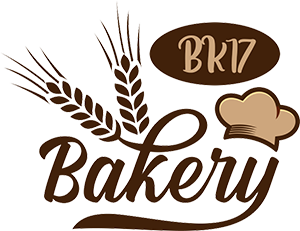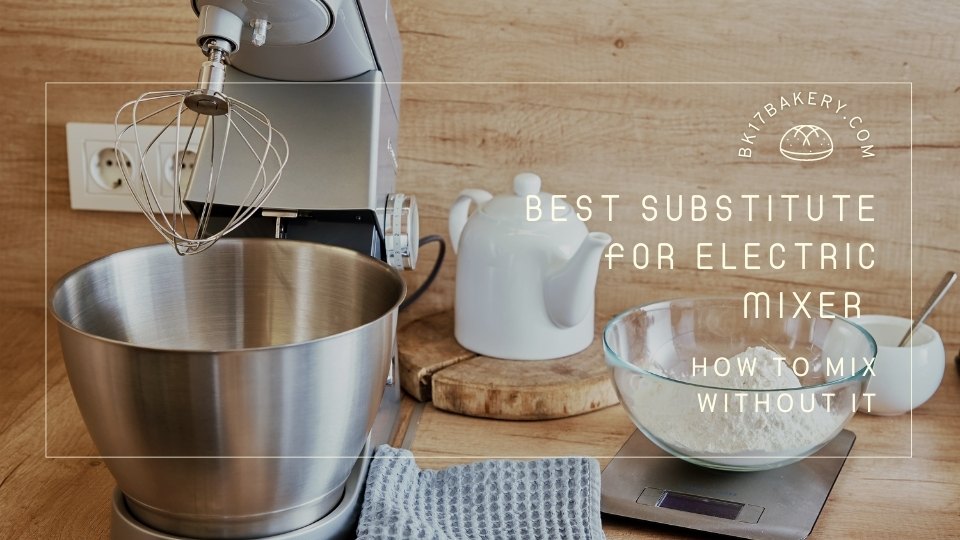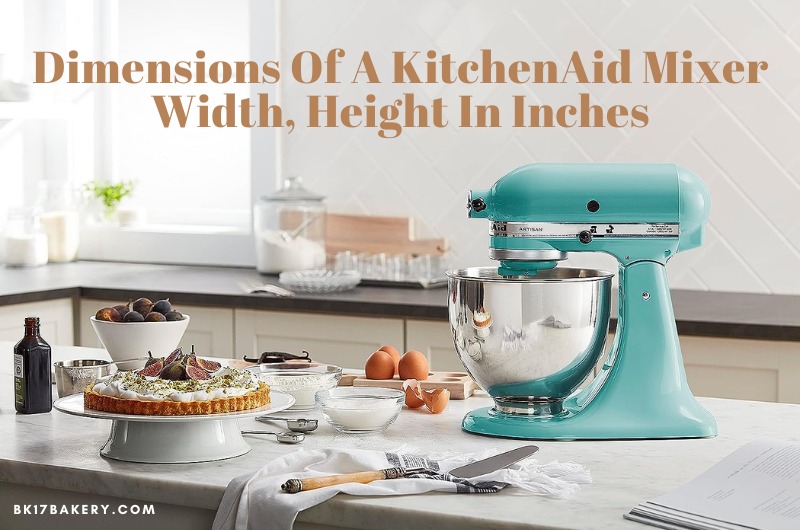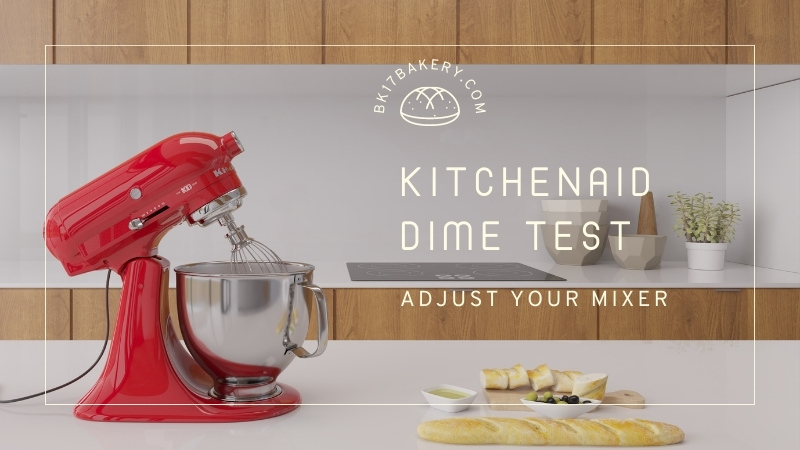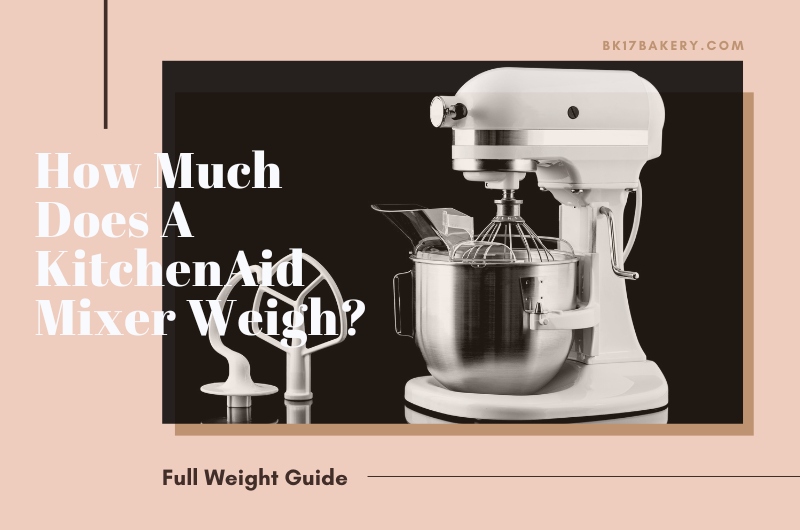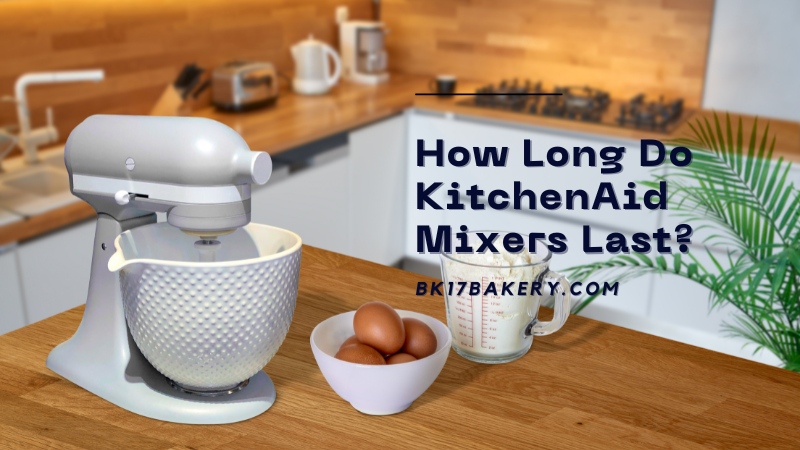Electric mixers, as the name suggests, automate the dry ingredient whisking and beating process for home bakers of all levels.
Gone are the days one has to do everything manually… well, at least until you are thrown into a kitchen space where electric mixers are no longer available. What other substitutes should you consider, then?
Let me lend a helping hand by detailing how to beat without a mixer in my inclusive guidelines, using alternative kitchen equipment.
In This Article
What Are The Best Substitutes for Electric Mixers?
Although their performances do not live up to an electric mixer, you can still use hand mixers, hand whisks, spatulas, food processors, wooden spoons, and blenders instead. Even manual kneading (with your fingers) sometimes works, too – albeit time-consuming.
1. Hand Mixers (for Whipping and Frosting)
Hand mixers go great with frosting, whipping, or even icing. With air volume almost as similar as electric mixers, they are an excellent choice for stiff peaks and airy yet smooth cake batters. Not to mention, the surface textures are just equally consistent!
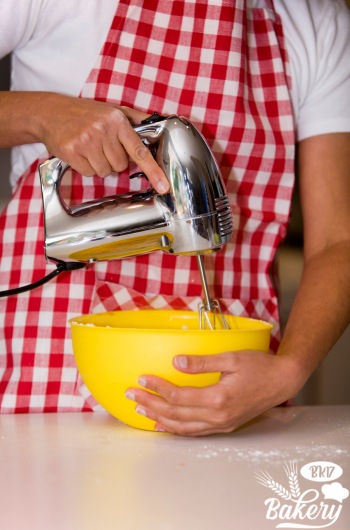
However, there comes a quite major drawback. Hand mixers are very small (much smaller than some higher-end stand mixers). So your dough kneading might become quite a challenge; brace yourself!
Pros
- Quick and easy whipping
- Similar results as electric, heavy-duty mixers
Cons
- This kitchen appliance might create messes from splatter shield
- Cannot knead bread doughs or mix up dry cake ingredients
2. Your Own Hands
Although considered a “yesterday tradition,” manual kneading methods are still very popular among seasoned cooks, including myself.
After all, I barely need to spend money on anything: all I need is my own fingers and some special care/extra effort! Plus, spending an entire afternoon kneading dough hooks with my children is a great way to tighten our bond.
The entire concept of dough-kneading is even, consistent stretching with no disruption; gentle and continuous motions are the key to success here. Be patient, and give them more time with your light pressing; practice makes perfect!
If done right, a perfect dough will manifest after only 5 to 15 minutes, depending on quantity.
Pros
- Very easy (especially for beginners)
- Requiring no tools at all
- No cost
Cons
- Manual energy and effort are needed; you may find it energy-draining and exhausting.
- Time-consuming
- Some people struggle to smooth out the textured dough and remove clumps
3. Spatula
Electric mixers are not the only devices capable of paddle mixing. Thousands of plastic-made and silicon spatulas have been introduced to the market to ease your process of folding/mixing cake batters!
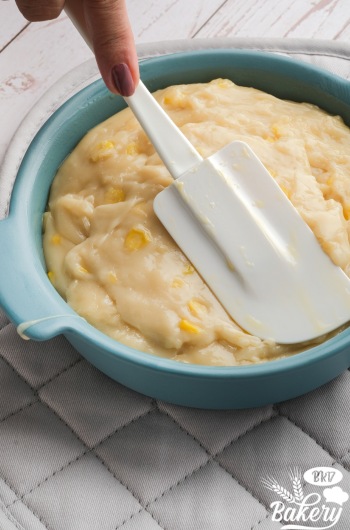
Most models are beginner-friendly, so there is no need to worry about spending your money in the wrong place.
And despite having a KitchenAid Artisan mixer (tilt-head model) myself, I sometimes prefer to use spatulas to clean my frosted bowl size and whipped cream.
They swipe up every batter bit with zero difficulties! Baking aside, spatulas also prove practical in non-mixing functions like deglazing, folding, plating, and more.
Pros
- Cheap
- Accessible
- Easy usage
- Simple design
Cons
- Not used to larger mixer tasks/ batch of meatball density
- Call for lots of elbow grease
4. Hand Whisks
Another great alternative to consider is the traditional whisk, which has worked its magic for light batter mixture, egg whipping, or any recipe that needs you to beat the air into the batch.
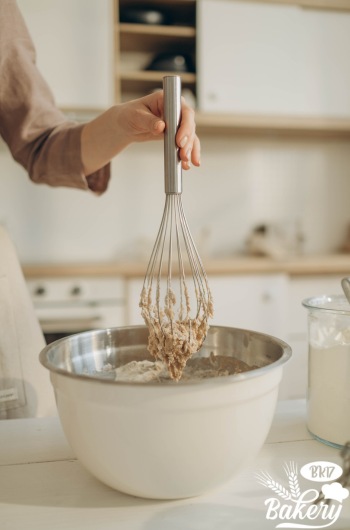
However, like manual kneading, hand whisks can only perform best when you are up to the game. Roll up your sleeves and prepare to spend at least one hour sweating in the kitchen!
And on another note, I’ve seen good results using whiskings for thin batters, like Genoise sponge or Chiffon cakes, but I struggled a bit with thicker treats, such as cookie doughs.
Just one slightest misstep might end up clogging the whisk with excessive batter, making it difficult to handle large amounts of dough with ease.
Pros
- The easiest method for egg beaters/flat beaters
- Straightforward usage
- No cleaning difficulties
- Cheap
Cons
- Requiring manual energy and effort
- Cannot handle large bowl mixtures or thicker batter
5. Food Processors or Built-In Meat Grinder
For liquid ingredient mixtures, trust me; food processors with pulse functions are the best alternative out there! I only tried them once as an experimental attempt after my electric mixer broke down – and the food processors surprisingly blended delicate ingredients perfectly like a magic charm.
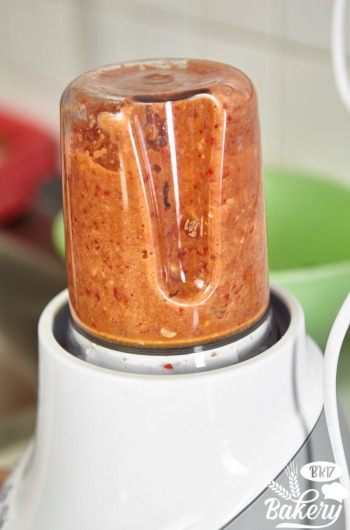
But that’s about it; as mentioned above, food processor substitutes can only replace stand mixers when it comes to wet ingredient blending. Their air infusion is nowhere near a mixer or even an immersion blender, meaning they cannot make frosts or whip creams.
To avoid unnecessary disappointment, learn where to set your expectations with a substitute food processor.
Pros
- Excellent mixing process of wet baking ingredients
- No lingering lumps remain
Cons
- Cannot tackle larger batches (since foot processors are not usually big)
- Cannot make frosts or whip creams
- Lower-end models take time to get started
6. Wooden Spoons
Looking for recipes of naturally thicker foods (pound or carrot cakes, for instance)? Then the hand whisks above might not be an excellent option for your cooking journey, as the batter might get stuck amidst the whisk’s messy wires and jam all their gaps.
Getting them unstuck is quite a nightmare – even for my naughty children, who love chaos and mess more than anyone else!
So it is time to grab your old wooden or silicone spoons and jump to work. While they do not sound like a charming substitute mixer compared to electric mixers’ powerful motors, their value is beyond the surface.
Not only can you have better control over their usage, but the mixture also folds much more easily.
Pros
- Easy to use
- Great and precise control of the mixture
- No mess left
- Very cheap
Cons
- Manual effort
- Time-consuming
7. Capacity Blenders (Handheld Whisk Blender Counted)
Can I use a blender instead of a mixer? The answer is Yes; during emergencies, a pastry blender (both immersion and stand models) can work in a pinch!
However, stay alert. It does a wonderful job mixing the cake’s wet ingredients, but not much air is whipped into the batter. Hence, the final textures might not be on par with your exact vision – though they are still decent enough for everyone’s enjoyment.
Some helpful mixing guides to make the most out of your orbital blenders:
- Mix the melted cream butter, sugar, and eggs until their color turn light
- Tip your wet mixtures out, then start folding them in the drier ingredients
You may ask me, why not mix the whole batter in these blenders to save time?
Well, it is not impossible – but remember that blenders are more powerful than you think. Any signal of overmixing will lead to excessive flour gluten; your cake texture will not turn out pleasant at all.
Pros
- Great wet ingredient mixture
- Easy food prep jobs
- Fast blending
Cons
- Less-than-ideal texture
- Risks of overmixing
Electric Mixer vs Manual Hand Mixer: Which Is Better?
Electric mixers are the clear winner between the two. They handle larger capacities like they are nothing, optimizing your baking process with numerous attachments, speed settings, and power options. Not to mention, their beautiful design features are a sight to see in any kitchen.
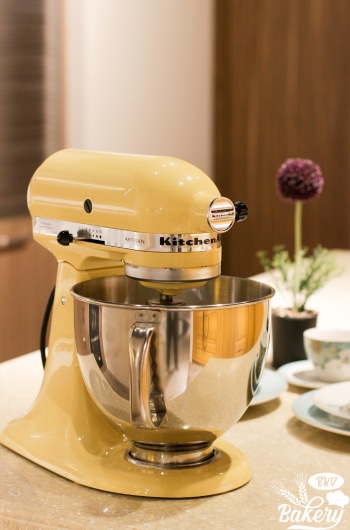
That does not mean they have no drawbacks, by the way: electric mixers are notorious for their off-the-root charges, heavy bulks, and significant occupation of countertop space.
Tight-budget customers – or those with limited counter space – will not likely find stand mixers an excellent product in the long run.
I suggest turning to hand mixers instead if you only need small pizza dough batches or very light mixing. Take your recipe types, usage frequencies, and preferences into the picture, too.
When Electric Hand Mixers Cannot Be Replaced
Frankly, there is no such situation. Guaranteed enough expertise and elbow grease, you can mix anything using your whisk, hand mixer, or your own fingers without an electric blender mixer.
Still, no one wants to jump head-first into a challenging baking process that takes up almost the entire day. To reduce the level of difficulties, you should use effective mixers when dealing with:
Very Thick Mixtures or Yeast Dough
Certain mixtures are much harder to handle manually than others. Hence, if your recipes demand very thick mixtures/ingredients (butter, for instance), using electric mixers would be much better.
Still insist on manual tools? Then try to replace the thicker ingredients with their thinner alternatives (swapping butter with oil, for example, provided that the recipes allow it). Unlike butter, oil requires zero softening, which can lift lots of burden off your shoulders.
Very Large Batches
Steer clear of large batches whenever you can. “Large batches” here refer to an amount higher than the requirements from a typical, standard recipe.
For instance, several cupcakes or one single cake are nothing on manual kitchen tools like hand whisks or wooden spoons. But dozens of small cupcakes or multiple loaves of bread are a different story; electric mixer models/ electric kitchen appliances are clearly irreplaceable in that case.
Specific Mixer Alternatives in Some Recipes
- French Madeleines (with Apricot and almond glaze): Use a whisk to mix the tea-cake batter
- Molten chocolate: Consider a spatula and a whisk
- Homemade blueberry muffins: Try out wooden spoons to ensure a consistent distribution
- Creamed potato: Fluff up the mashed potatoes with your hand-held masher or ricer.
- Quick bread: Like blueberry muffins, a quick loaf of bread can be processed using wooden spoons/ kitchen knives and your own fingers.
See more: Is Homemade Bread Healthier and Cheaper Than Store-Bought?
Conclusion
My list has discussed seven fancy options that can replace an electric mixer blender. Sure, some of their drawbacks are quite notable; but with extra caution and expertise, they can still process large amounts of ingredients!
Write to me if any orbital mixer substitute/ kitchen utensil confuses you.
